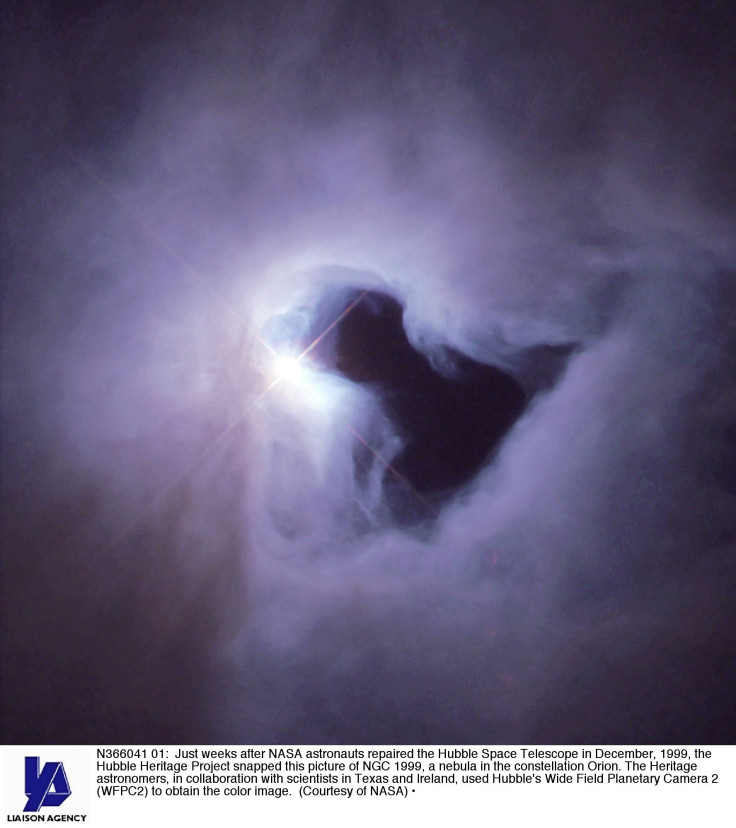NASA's Hubble Captures Stunning Monkey Head Nebula 'Wispy Clouds' [PHOTO]

A small part of the Monkey Head Nebula was captured in a stunning image by the NASA/ESA Hubble Space Telescope during its 24th anniversary.
On its official Twitter page, NASA posted a spectacular image of the Monkey Head Nebula, which is also known as NGC 2174 and Sharpless Sh2-252, taken five years ago. The incredibly detailed infrared view of the nebula shows "dark, wispy clouds of gas and dust are giving birth to new stars," according to the tweet.
The Hubble telescope obtained the image of the Monkey Head Nebula located 6,400 light-years away from Earth during the 24th anniversary of its launch, which happened on April 24, 1990. Check it out below.
#HubbleClassic Dark, wispy clouds of gas and dust are giving birth to new stars 6,400 light-years away in the Monkey Head Nebula (NGC 2174). Hubble captured this infrared view of a small part of the nebula 5 years ago for the telescope's 24th anniversary: https://t.co/l62Z8Cr5vg pic.twitter.com/bnPnb73DdE
— Hubble (@NASAHubble) April 2, 2019
The dark clouds of dust are formed by massive, newly birthed stars in the center of the Monkey Head Nebula, according to the description of the image. The newborn stars produce ultraviolet light that shapes the dust into giant pillars. Hydrogen is the main composition of the nebula, and the gas gets ionized when exposed to ultraviolet light.
The twinkling lights in the Hubble image are interstellar dust particles that heated up due to the radiation from the stars in the Monkey Head Nebula's core.
Aside from the Monkey Head Nebula image, NASA also brought back another stunning view taken by the Hubble telescope. During its 16th anniversary in 2006, the Hubble captured the galaxy M82, also known as the Cigar galaxy, in an incredible infrared mosaic.
#HubbleClassic Fiery-looking plumes of hydrogen gas blast out of the blue disk of galaxy M82, where stars form 10x faster than in our galaxy. Hubble captured this visible & infrared mosaic of M82 in 2006 to celebrate the telescope's 16th anniversary: https://t.co/iLmj5Orbhj pic.twitter.com/PannHNoUYi
— Hubble (@NASAHubble) April 9, 2019
Located 12 million light-years away in the Ursa Major constellation, M82 was first observed by German astronomer Johann Elert Bode in 1774, along with its galactic neighbor M81, according to its image description.
The image of M82 showed "fiery-looking plumes of hydrogen gas blast out of the blue disk" of the galaxy. The core of the Cigar galaxy has 10 times the rate of star formation of the entire Milky Way Galaxy, mainly thanks to the former's gravitational interactions with its neighbor, M81.
The newborn stars produce radiation and energetic particles that carve into the gas surrounding them. In turn, this produces galactic wind that compresses enough gas to form millions of stars.
However, this rapid star formation rate won't last forever. Eventually, the galaxy will begin to consume or destroy the necessary material needed for stellar formation.
© Copyright IBTimes 2024. All rights reserved.





















